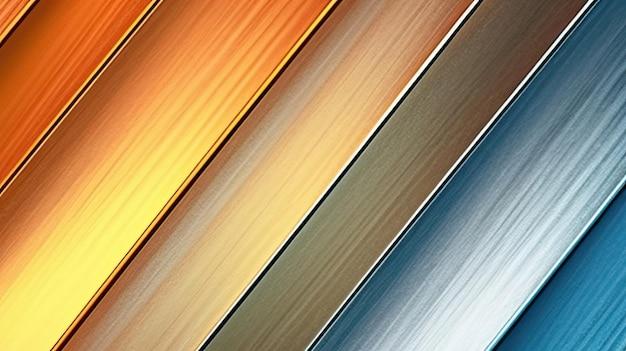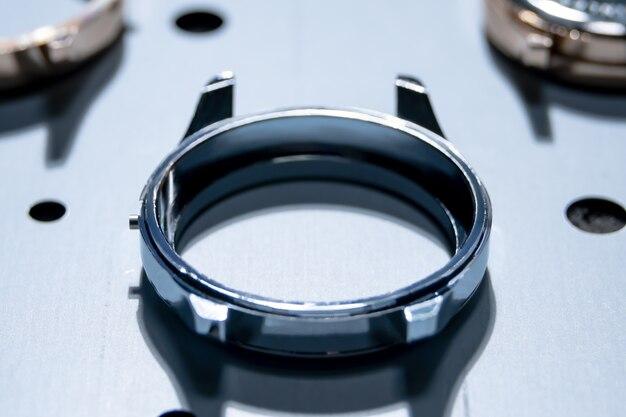PVD, or Physical Vapor Deposition, coating has gained popularity in the world of watchmaking due to its durability and unique aesthetic appeal. But one question that often arises is, “Does PVD scratch?” In this comprehensive blog post, we will delve into the world of PVD coating and explore whether it lives up to its scratch-resistant reputation.
We’ll start by understanding what PVD coating actually is and how it is applied to watches. We’ll then address the common misconceptions surrounding PVD, such as whether it can be polished, how long it lasts, and whether it is a real gold coating. We’ll also compare PVD to other coating methods, such as electroplating, to understand its advantages.
So, if you’re curious about PVD coating, whether it’s durable, or why black watches have gained popularity, join us as we debunk myths, provide insights, and answer your burning questions about PVD coating on watches. Let’s dive in!
Does PVD Scratch
What is PVD Coating
PVD (Physical Vapor Deposition) Coating is a process used to apply a thin film coating onto various materials, such as metal, ceramics, or glass. It involves the deposition of a vaporized material onto the surface, creating a protective layer with enhanced properties like improved hardness, durability, and resistance to wear and corrosion. But the burning question remains: does PVD scratch?
PVD Hardness: Tough as Nails
You might be relieved to know that PVD coatings are highly scratch-resistant. Thanks to the advanced technology involved, these coatings are incredibly durable and won’t scratch easily. So, whether you’re donning your favorite PVD-coated watch or rocking a PVD-coated piece of jewelry, you can rest assured that it can handle the occasional rough and tumble without showing signs of wear.
Exceptions to the Rule
While PVD coatings are generally scratch-resistant, it’s important to note that no material is completely immune to scratches. In the case of PVD coatings, extremely sharp objects or intense abrasion can potentially scratch the surface. So, while your day-to-day wear and tear won’t make a dent in the PVD coating, it’s best to avoid intentionally rubbing it against rough surfaces or using abrasive materials when cleaning.
Maintaining the Shine
Even though a PVD-coated surface is highly resistant to scratches, it’s still important to take care of it properly to maintain its shine and integrity. Avoid using harsh chemicals or abrasive cleaners that can potentially damage the coating. Instead, opt for gentle cleaning methods like using mild soap and warm water, or a soft cloth dampened with a non-abrasive cleaning solution. This way, your PVD-coated item will not only remain scratch-free but also retain its flawless appearance.
In conclusion, PVD coatings are designed to withstand the test of time and maintain their scratch-resistant properties. While they may not be completely impervious to scratches in all circumstances, they offer superior protection compared to untreated surfaces. With proper care, your PVD-coated items can retain their lustrous shine for years to come, allowing you to flaunt your style without worrying about scratches. So go ahead, embrace the durability of PVD coatings and enjoy their ability to withstand the occasional scrape or bump!
FAQ: Does PVD Scratch
Gold-Filled or Gold Plated: Which Lasts Longer
Q: Is PVD gold fake?
A: Not at all! PVD (Physical Vapor Deposition) gold is a real gold coating applied to various surfaces, including watches and jewelry. It offers a durable and beautiful alternative to solid gold.
Q: Which lasts longer, gold-filled or gold-plated?
A: While both gold-filled and gold-plated items have a limited lifespan, gold-filled jewelry tends to last longer. Gold-filled pieces have a thicker layer of gold bonded to a base metal, providing greater durability and preventing the gold from wearing off quickly.
The World of PVD Watches
Q: What does PVD mean on a watch?
A: PVD stands for “Physical Vapor Deposition.” It is a process where a thin layer of material, such as gold, is applied to the surface of a watch through a vacuum deposition technique. This results in a durable and scratch-resistant coating.
Q: How long does PVD last?
A: PVD coatings are highly resilient and can last for many years with proper care. However, their lifespan will ultimately depend on factors such as the quality of the coating, how frequently the watch is worn, and how well it is maintained.
Q: Do black watches scratch easily?
A: Black watches with PVD coatings generally offer excellent scratch resistance. However, it’s important to note that no material is entirely scratch-proof. With regular use and proper care, PVD-coated watches can withstand daily wear and tear without significant scratches.
Q: Can you polish a PVD watch?
A: Unfortunately, polishing a PVD watch is not recommended. The polishing process may remove or damage the PVD coating, affecting the overall appearance of the watch. It’s best to consult a professional watch service center for any maintenance or restoration needs.
Q: Can you PVD at home?
A: PVD coating requires specialized equipment and expertise, making it impractical for DIY applications. It’s advisable to leave the PVD process to professionals who have the necessary tools and knowledge to ensure a high-quality and durable coating.
Durability and Maintenance of PVD Coating
Q: Does black PVD coating wear off?
A: When properly applied and cared for, the black PVD coating on watches should not wear off easily. PVD coatings bond strongly with the underlying material, creating a resilient barrier that can withstand daily wear and abrasion.
Q: Is 24k PVD real gold?
A: While 24k gold is pure gold, 24k PVD typically refers to a gold-colored coating applied using the PVD process. It does not contain pure gold. Instead, it offers a gold-like appearance that mimics the richness of 24k gold.
Q: Is PVD better than Chrome?
A: PVD and chrome coatings serve different purposes. PVD provides a durable, scratch-resistant, and often more aesthetically appealing finish. Chrome, on the other hand, offers a bright, reflective surface but is more susceptible to scratches and wear.
Q: Do black watches look good?
A: Absolutely! Black watches exude a stylish and sophisticated look. The black PVD coating accentuates the watch’s design, adding an air of elegance and modernity to any outfit or occasion.
Q: Is PVD coating durable?
A: PVD coatings are known for their durability and resistance to scratching. They provide a tough protective layer that can withstand everyday use, making PVD-coated watches a reliable choice for those looking for long-lasting beauty and functionality.
Understanding PVD Coating
Q: What is PVD coating on stainless steel?
A: PVD coating on stainless steel refers to the process of applying a thin layer of material, such as titanium nitride or zirconium nitride, to the surface of stainless steel through physical vapor deposition. This enhances the stainless steel’s appearance and improves its resistance to wear and corrosion.
Q: Can you scratch PVD coating?
A: While PVD coatings are highly scratch-resistant, they can still be scratched if exposed to sharp or abrasive objects. However, everyday wear is unlikely to cause noticeable scratches on a PVD-coated watch.
Q: Does PVD coating tarnish?
A: Unlike traditional gold-plated items, PVD coatings do not tarnish. The physical vapor deposition process creates a durable barrier that protects the underlying material from oxidation and discoloration.
Q: Which is better, electroplating or PVD?
A: PVD coatings are generally considered superior to electroplating. Unlike electroplating, which relies on an electrical current to bond the coating, PVD creates a stronger, more durable bond through the vapor deposition process. PVD coatings also offer better scratch resistance and a wider range of color options.
Additional Information about PVD Watches
Q: Will PVD wear off?
A: With proper care, PVD coatings should not wear off easily. However, over time, the coating may show signs of wear, particularly in areas that experience frequent friction or contact. Regular maintenance and avoiding abrasive materials can help prolong the lifespan of the PVD coating.
Q: Is PVD coating expensive?
A: The cost of PVD coating can vary depending on factors such as the type of material being coated, the size and complexity of the object, and the desired finish. While PVD coating is generally more affordable than solid gold, prices can range from modest to higher-end, depending on individual preferences and budgets.
Q: Does Rolex make PVD watches?
A: Rolex does not produce watches with PVD coatings as part of their standard collection. However, they offer alternative high-quality coatings like their proprietary Cerachrom, which provides exceptional scratch resistance and long-lasting beauty.
Q: What does black PVD mean?
A: Black PVD refers to a watch or other item that has undergone the PVD coating process, resulting in a sleek and modern black coloration. This black coating offers not only an attractive aesthetic but also enhanced durability and scratch resistance.
Q: How much does it cost to PVD a watch?
A: The cost of PVD coating a watch can vary depending on things like the size of the watch, complexity of the design, and the specific PVD coating chosen. On average, PVD coating a watch can cost anywhere from $100 to $500, but prices may vary depending on various factors.
Q: What is black PVD on watches?
A: Black PVD, or Physical Vapor Deposition, on watches refers to the process of applying a black-colored coating using the PVD method. This coating enhances the watch’s appearance, providing a sleek black finish that adds a touch of sophistication and durability.
Now you have a comprehensive FAQ-style guide about PVD coating and its durability, maintenance, and application in the world of watches. Have fun exploring the world of PVD watches, and stay stylish!

